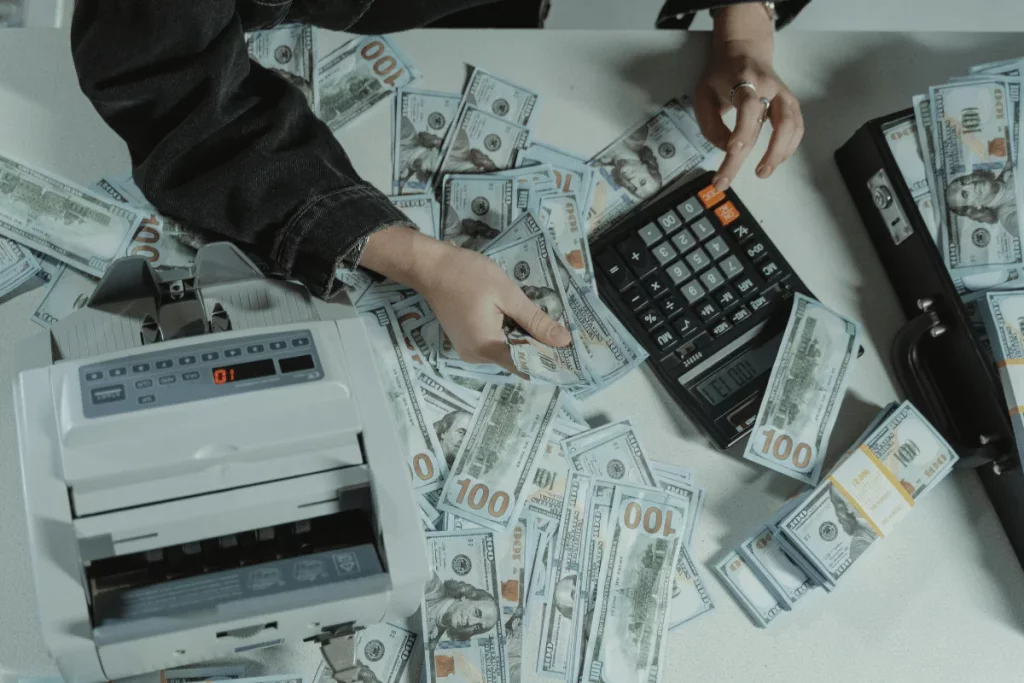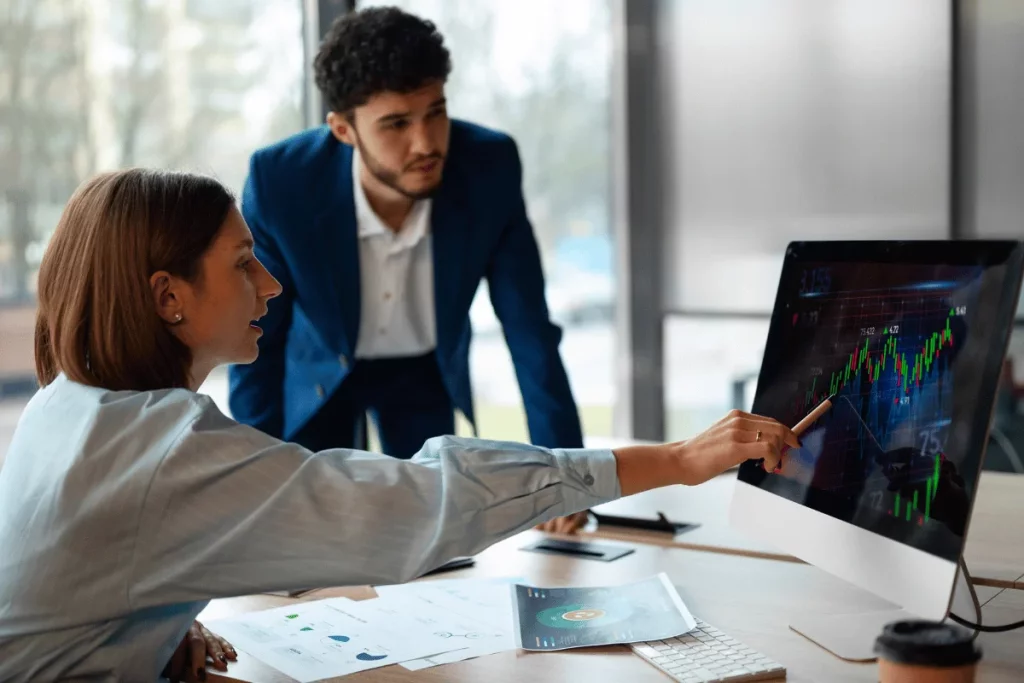According to Statista, the US retail market reached over $7 trillion in sales revenue in 2023, while IBISWorld estimates the market will keep expanding over the next five years.
Such juicy figures and futuristic developments signal an ideal time to sell your retail business because you can fetch a maximum price. But you'll first need to value your business accurately, which can be daunting.
Our guide today explores how to value a retail business to attract the highest sale price from the right buyer. Let’s get to it!
The valuation of a retail business is a complicated process.
Here are the steps to simplify it:
We agree that valuing your retail trade business can be overwhelming, so we’re here to help.
Before we discuss these steps further in an upcoming section, we invite you to check out how we at Exitwise assist you with business valuations and sales.
We help you recruit and manage the best team of M&A experts in your niche. These experts then calculate your earnings, assess your inventory, and accurately value your business using various valuation metrics.
Book your free consultation today to streamline your valuation and exit strategy.

A valuation multiple is a ratio that compares the value of a business to a critical financial metric, such as revenue, sales, or earnings.
Most valuation multiples come from the market-based valuation approach after valuers analyze the sale multiples of recently sold similar businesses.
SDE stands for “Seller's Discretionary Earnings," which is the total amount the owner receives as the benefit of owning the business.
The typical SDE multiples for retail businesses range between 1.5x and 3.0x but can be as high as 2.5x to 3.2x, depending on business size, niche, and growth potential.
SDE multiples usually apply to businesses owned by one person and have less than $1 million in annual revenue.
Note that you can ask the buyer to pay for your current inventory at cost in addition to the business’s value based on its SDE.
An EBITDA multiple values a business as a factor of its earnings before interest, taxes, depreciation, and amortization. The multiple is ideal for retail companies with over $1 million in annual revenue.
Most retail businesses fetch an EBITDA multiple of 3.0x to 5.0x if they have annual revenues between $5 million and $100 million. Smaller businesses with annual revenues less than $5 million typically have EBITDA multiples of 1.5x to 3.0x.
Revenue multiples value a business as a factor of its total annual income.
According to BizBuySell, the average revenue multiple for retail businesses is 0.52x based on its 2017-2023 insights.
Typically, the multiple ranges between 1.0x and 2.0x and can be as high as 4.0x if the business is expected to grow exponentially or has high percentages of recurring annual revenues.
Note that you can ask the buyer to pay for your current inventory at cost in addition to the business’s value based on its revenue.

How do you value a retail business? You can use the asset-based, market-based, or income-based approaches discussed below.
The asset-based valuation method is ideal for retail businesses with many tangible assets.
You'll need to consider tangible assets such as inventory, vehicles, equipment, and property. Important intangible assets include brand value and reputation, customer goodwill, and intellectual properties.
Here's the valuation formula:
Net value of assets or business = Total Assets - Total Liabilities
Let's see an example of a business with the following particulars:
Retail business value = $1,900,500 - $500,000 = $1,400,500

The market-based approach analyzes comparable market data, using the prices of recently sold retail businesses as a benchmark, and then applies a multiple to metrics like annual sales or net earnings.
An average may be necessary where you've used various valuation metrics.
With this method, you compare your business with similar businesses based on location, industry trends, size, customer base, competition, and profitability.
Here's an example of a business and a market with the following particulars:
Valuation based on earnings (P/E) = $400,000 x 7 = $2,800,000
Valuation based on annual sales (P/S) = $3,000,000 x 2 = $6,000,000
Valuation based on annual profit = $400,000 x 3 = $1,200,000
Combining the three valuations: $2,800,000 + $6,000,000 + $ 1,200,000 = $10,000,000
Dividing by the number of valuations used,
Average market-based value = $10,000,000 / 3 = $3,333,333

In this method, the valuation focuses on the present worth of your business’s projected income.
The method considers past and future financial performance based on cash flows, revenues, and profit margins over a given period.
Let's consider an example based on the following metrics:
Determine the discounted cash flows for each year:
DCF = CF₁ / (1 + r)¹ + CF₂ / (1 + r)² + … + CFₙ / (1 + r)ⁿ
Determine the terminal value at Year 3 and discount it to the present value:
Terminal value = [$450,000 x (1 + 0.03)] / (0.12 -0.03) = $463,500 / 0.09 = $5,150,000
Discounted terminal value = $5,150,000 / (1 + 0.12)^3 = $5,150,000 / 1.40 = $3,678,571
Add all the DCF values for the three years: $312,500 + $318,877 + $320,301 = $
Total value of the retail business = Total DCFs + Discounted Terminal Value = $951,678 + $3,678,571 = $4,630,249
All these valuations can be daunting. At Exitwise, we can help you calculate your business's value once you've hired your dream M&A team. Reach out to our advisors today to set things in motion.

Your retail business valuation will depend on the following factors:
A business with a strong historical performance attracts a higher valuation.
Your retail business will be worth more if there is a high demand for its services or products. The same applies if the business can expand quickly into new geographic locations or add new services or products.
A prime location with lots of foot traffic means more customers and revenue, thus a higher valuation. If your business location registers friendly renting costs, your business valuation rises.
Retail businesses that manage their inventory well and have a high turnover rate from high sales attract higher valuations.
Does your business have a massive list of repeat customers? If so, you can receive a higher value for it.
Your conversion rate is the ratio of your total sales to the total foot traffic. A higher rate means a higher business valuation.
The retail trade sector is cyclical and often affected by seasonality. If you sell your business during the peak season, you can get a higher valuation.
A celebrated retail business attracts a premium value because it enjoys substantial customer goodwill and loyalty.

As mentioned, valuing a business is a complicated process. Here's an easy step-by-step guide on how to value a retail business for sale.
It's important to understand your business before valuing it. Consider your products or services, clients, suppliers, value proposition, weaknesses, and opportunities.
A deeper understanding can help you see opportunities to maximize your business’s value and fetch a higher sale price.
Your business's financial performance can tell you if it's the right time to sell. Review your financial records and metrics to assess your financial health, profitability, and liquidity.
Valuing inventory is crucial when selling a retail business.
In some valuation methods like SDE and revenue multiples, you can ask the buyer to pay for the cost of the inventory in addition to the valuation amount. In the asset-based method, you count the inventory as an asset.
You'll also want to show potential buyers how well your inventory is managed and its high turnover rate from high sales.
Analyze the prevailing market conditions regarding consumer behavior, industry trends, and competition. How would these affect the valuation of a retail business?
You can choose to use a multiple against a financial metric. Alternatively, use the longer route of valuing based on assets, the market, or projected cash flows for a better picture.
Use your selected method to evaluate your business. A combination of different techniques can produce better results.
You typically consider your intangible assets using the asset-based method.
However, the market-based method can also benefit if you factor in intangible assets such as goodwill.
Once you complete the valuation, compile a report to show to potential buyers and for internal decision-making.

When valuing your retail business, you may focus solely on the numbers, which might mean leaving money on the table.
Instead, you should adopt a holistic approach that goes beyond financial metrics by considering qualitative and intangible assets to obtain a truer value.
You'll want to consider the aspects below:
When you factor in qualitative aspects and intangible assets, you get a more comprehensive and accurate valuation that captures more than just financial metrics.

Different exit plans may require different business valuation methods. You can align the methods depending on the exit strategies below:
You’ll want to work with professionals to evaluate the business realistically and align the value with your business, personal, and exit goals.
Through Exitwise, you can have your business’s worth evaluated correctly to ensure you finally sell it at the best price possible.
Check out our certified business valuation services to gain the confidence, clarity, and strategy to get an optimal outcome.

While you can do a simple or basic business valuation yourself, we always advocate having professionals do it for you because of the following benefits:

A valuation alone may not be enough to sell your retail business at the right value. A lot can happen between the valuation and the closing of the deal, which might make you sell at a lower price.
To avoid that, here are some ways to ensure you sell at the right value:

Understanding the valuation process and its results is important. Equally important is understanding the common mistakes you or your valuation team might make.
Let's explore some of the most frequent mishaps in retail business valuations:

Let's end our discussion today with questions retail business owners usually have about valuations and finding buyers.
The most prevalent rule of thumb for valuing a business is to apply a multiple to a financial metric such as EBITDA, seller's discretionary earnings, net annual revenue, or net annual sales.
It's easy to attract the right buyer for your retail business.
Here are some helpful tactics:
You can revalue your retail business at least once a year. If your inventory will heavily influence your valuation, revalue the business as often as you evaluate the inventory, which is usually continuous.
You can know if your retail business is overvalued if you notice the following red flags:
In such cases, your goal is to review the valuation and align it with the reality in the industry.
There's no one-size-fits-all when it comes to retail store valuations. Every business’s unique characteristics will determine the fairness of its valuation.
As mentioned, the typical SDE multiples for retail businesses fall between 1.5x and 3.0x, while EBITDA multiples can range between 3.0x and 5.0x, depending on annual revenues.
When you think of how to value your retail business, you'll want to consider your understanding of the business, its financial health, the prevailing market conditions, and the most favorable valuation methods.
An easier way is to seek the help of Exitwise's M&A professionals to evaluate your business and eventually market it to the right buyers in their database.
Connect with us today so we can help you manage and hire your dream M&A team for an accurate valuation that relieves you of all the stress.
Let Exitwise introduce, hire and manage the best, industry specialized, investment bankers, M&A attorneys, tax accountants and other M&A advisors to help you maximize the sale of your business.

